| TennisOne Lessons The Two-handed Forehand Revisited David W. Smith, Senior Editor TennisOne Four years ago, I wrote an article on the two-handed forehand (The Two-Handed Forehand) for TennisOne describing this unique stroke as both a learning tool and potential weapon for suitable players and within many learning situations. This article continues to generate significant interest and dialogue among players, coaches, and teaching pros alike! Similarly to what we saw of the two-handed backhand of yesteryear, the two-handed forehand has been looked upon with with both suspicion and intrigue. Its use has invoked slander and ridicule, interest and curiosity, acceptance and rejection by both those in the teaching arena as well as those who enjoy playing and watching tennis.
This year at the Pacific Life Open here in Indian Wells, California, one can’t discount the number of pros seen hitting two-handed forehands…and winning! While the tournament is far from over, two specific players, Marion Bartoli of France and Peng Shuai, dominated first round opponents; Bartoli a 6-1, 6-2 over Tsvetana Pironkova of Bulgaria, and Shuai Peng defeated Vasilisa Bardina 6-1, 6-2. On these and the courts of other two-handed forehand players, one could overhear common remarks and observations among spectators.
Other pros using the two-hander include Zi Yan of China and Aiko Nakamura of Japan on the women’s side and Fabrice Santoro and Ramone Sluiter on the men’s.
In this update of the use and techniques of the two-handed forehand, I wanted to share not only the technical side of this stroke, but some common impressions which pros and players experience when trying to teach or learn the stroke.
Now I don't think the two-handed forehand is a shot everyone should use, nor do I think it is destined to become as common as the two-handed backhand has over the last thirty years.
Most pros and recreational players do fine hitting the traditional one-handed forehand with a high degree of success and minimal difficulty. However, it is not uncommon to discover many players who have difficulty with the conventional one-hander, but also, after seeing the pros use the shot at the world-class level of play, it certainly is not the limiting stroke so many claim it to be. Let’s consider that if the pros can use it at the speeds associated with professional-level world-class competition, then certainly the average Jane and Joe at the local club or city tennis courts should be able to execute the shot within their parameters of play. In addition, those who indeed learn tennis with a two-handed backhand, are already conditioned to use two hands and execute movements relative to those associated with two-handed strokes.
It is not uncommon to discover that the vast majority of teaching pros have never even tried teaching the two-handed forehand. And, it is even more uncommon to have a pro offer to teach something they know nothing or very little about. We encountered the same level of distaste for the two-handed backhand in the early 70’s. Common remarks heard about that shot included: “There is no reach” and “It’s a woman’s backhand.” Even after Borg, Connors, and Evert demonstrated that the two-handed backhand could indeed be taken to the highest levels of the game, it was still a shot that would take nearly another 20 years before a new generation of pros forced its acceptance. .
Both Bartoli (left) and Shuai, use relatively straight-back backswings, with Bartoli starting the take back higher but both getting below the ball early with nearly no loop in the swing. The turn and racquet preparation is as simple as it gets.
Having taught this stroke for nearly twenty years, I have found that the two-handed forehand can be hit with a full loop or, as in these examples, almost no loop at all. However, neither player were lacking in pace, spin, or overall power.
Granted, with two hands, you are not open to as much "whip" that the one-hander can implement; however, such a stroke uses a loose wrist and is difficult to hit with consistency and control. Thus, while one can generate more racquet head speed through such a swing, the two-handed forehand can be just the tool to help govern a player’s swing into a disciplined, dependable stroke. As someone once said, there is nothing wrong with hitting the same old boring winners.
Both players can execute the two-hander with an open, closed, or neutral stance. In these examples, Bartoli sets up with a semi-open stance and Shuai sets up with a small step in using a more neutral stance.
Both players are nearly identical at contact. Key position points include:
The use of two hands helps facilitate a full shoulder turn and a core turn of the torso which uncoils as the player begins to accelerate into contact. However, notice that the body does not open up as much as players who swing with one hand and those who use more significant western grips.
It is interesting to see this swing pattern among pros in other sports too. Professional golfers look like they swing with far less effort than typical players at the public courses trying to gain extra yardage. This concept becomes readily apparent when you watch a “fast serve” contest. Players can be observed trying to swing with every thing they’ve got, only to wind up with serves that seldom exceed 100 mph. Compare this to professionals when they serve: It is not uncommon to see women serve well into the 120’s and the men into the 130’s and above. Yet, watching the pros, their motions appear effortless in comparison to the recreational or club player trying to hit a big serve.
Zi Yan, also of China, is another two-handed player on both sides who is also one of the top five world-ranked doubles players. I bring this up because it is not uncommon to erroneously group two-handed players on either side as not being able to volley. This assumption has been made by many but any inability to play the net or play doubles well is only a weakness because the player was not trained in this capacity. It would be like saying that because someone has a good backhand, they would not be able to hit a good overhead. These are different shots that simply need to be mastered to be used well in competition.
I don’t believe we will see the shot make as big of difference in the game as the two-handed backhand has done over the past thirty years; however, since it is becoming more common at the junior level as well as at the pro level, we just can’t summarily dismiss this shot any longer! Your comments are welcome. Let us know what you think about Dave Smith's article by emailing us here at TennisOne .
TENNIS MASTERYFinally. a resource that unlocks these mysteries: • Why do m • Why are making changes in one's game so frustratingly difficult? • What tennis teaching methods are disruptive or detrimental to player progression? Read David W. Smith's TENNIS MASTERY and learn not just how to avoid playing at mediocre levels, but how the best players in the world Master the sport of tennis! "With a depth of knowledge and fresh perspective, TENNIS MASTERY is set to become a manual for tennis instructors and a measure for tennis literature." Richard Wigley, Director, Kayenta Tennis Center, Ivins Utah. Take in David Smith's 30 plus years in the tennis teaching industry. This 335-page manual will provide for every level of player as well as support for all tennis-teaching professionals, a blueprint for reaching higher levels of tennis mastery. Order TENNIS MASTERY at tenniswarehouse.com , or go to tennismastery.net for exciting excerpts from the book and a host of tennis information! And check out David Smith's other articles found here at TennisONE.com |

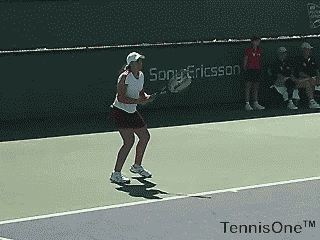 Marion Bartoli cracks this two-hander during her first round match at the Pacific Life Open.
Marion Bartoli cracks this two-hander during her first round match at the Pacific Life Open. 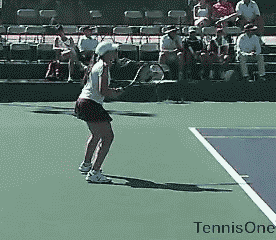
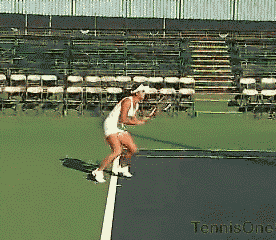
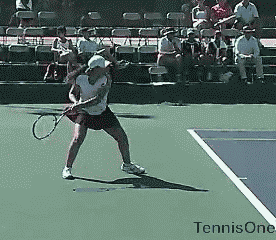
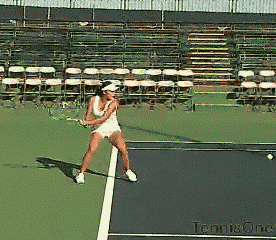
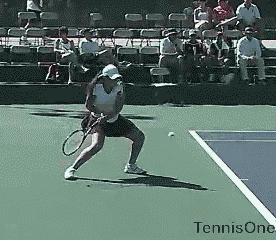
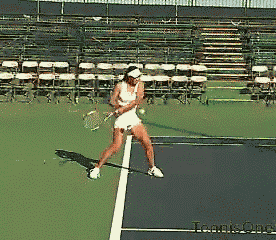
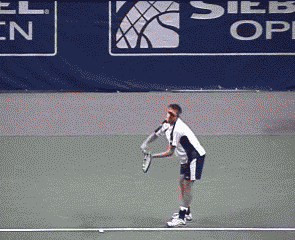
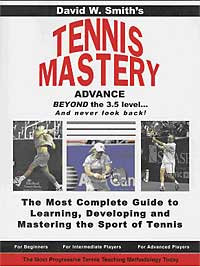 illions of tennis players stagnate at levels far below their potential?
illions of tennis players stagnate at levels far below their potential?